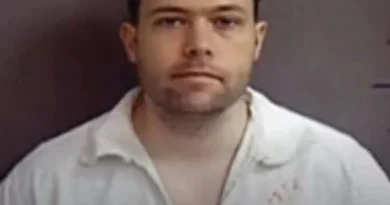Frank Matthews Generated Over $100M of Drug Money Then Disappeared from Brooklyn New York
Frank Matthews, often referred to as “Black Caesar,” was a prominent figure in the American drug trade during the 1960s and 1970s. His operations, primarily based in Brooklyn, New York, expanded across numerous states and netted over $100 million dollars, establishing him as one of the most influential drug traffickers of his time. This article delves into Matthews’ rise, his expansive drug network, and his enigmatic disappearance.
Early Life and Entry into Crime
Born on February 13, 1944, in Durham, North Carolina, Frank Larry Matthews faced adversity early in life. After his mother’s death when he was four, he was raised by his aunt, Marzella Steele. Matthews dropped out of school in the seventh grade and soon led a group of youths in stealing chickens from local farms. This early brush with crime resulted in a year-long sentence at the Raleigh State Reformatory for Boys. Upon his release, Matthews relocated to Philadelphia, Pennsylvania, where he became involved in the numbers racket, an illegal lottery prevalent in urban communities. His activities in Philadelphia led to an arrest in 1963, after which he moved to the Bedford-Stuyvesant neighborhood of Brooklyn, New York. There, he worked as a barber while continuing his involvement in the numbers game, loan sharking, and enforcement activities.
Transition to the Drug Trade
In 1965, seeking greater profits, Matthews shifted from the numbers racket to the heroin trade. Initially, he attempted to collaborate with New York’s Italian Mafia families, including the Gambino and Bonanno organizations, but was rebuffed. Undeterred, Matthews connected with “Spanish Raymond” Márquez, a notable Harlem numbers operator, who introduced him to Cuban Mafia boss Rolando Gonzalez Nuñez. Through this connection, Matthews secured his first kilogram of cocaine for $20,000, marking his entry into large-scale drug trafficking. This relationship blossomed, with Gonzalez supplying Matthews with substantial quantities of heroin and cocaine from South America. Within a year, Matthews had become a significant player in New York’s drug scene, diversifying his supply sources and expanding his influence.
Expansion of the Drug Empire
By the early 1970s, Matthews’ organization was handling multimillion-dollar shipments of heroin, in excess of $100 million dollars, with operations spanning 21 states. The Drug Enforcement Administration (DEA) noted that Matthews controlled the cutting, packaging, and sale of heroin in every major East Coast city. In Brooklyn, he operated two major drug mills: the “Ponderosa” at 925 Prospect Place and the “OK Corral” at 101 East 56th Street. Both facilities were fortified and guarded, underscoring the scale and professionalism of his operations. Matthews supplied heroin to various dealers, including Philadelphia’s Major Coxson, who then distributed it to the Black Mafia. His influence extended to purchasing a residence in Staten Island’s Todt Hill, near Gambino family boss Paul Castellano, and laundering money through Las Vegas casinos.
Challenging the Mafia’s Monopoly
In 1971, Matthews convened a meeting in Atlanta, Georgia, inviting major African-American and Hispanic drug traffickers to discuss strategies for importing heroin independently of the Italian Mafia. The DEA monitored this gathering, which highlighted a shift in the drug trade’s dynamics. Attendees aimed to establish direct connections with sources like the Corsican and Cuban mafias, reducing reliance on traditional Mafia-controlled channels. This move signified a growing empowerment among Black and Hispanic traffickers in the narcotics underworld.
Conflicts and Violence
Matthews’ expansion was not without challenges. Tensions with the Philadelphia Black Mafia led to violent confrontations, notably on Easter Sunday 1972, when Tyrone “Mr. Millionaire” Palmer, Matthews’ primary dealer in Philadelphia, was killed in an Atlantic City nightclub shootout. The incident resulted in multiple casualties and highlighted the perilous nature of the drug trade. Additionally, three of Matthews’ top lieutenants were murdered by the Black Mafia, underscoring the volatility and dangers inherent in his line of work.
Legal Troubles and Arrest
In December 1972, federal prosecutors in Brooklyn indicted Matthews for attempting to sell 40 pounds of cocaine in Miami between April and September of that year. The following month, the DEA arrested him at McCarran International Airport in Las Vegas on charges of tax evasion and conspiracy to distribute heroin and cocaine. Initially, bail was set at an unprecedented $5 million but was later reduced to $325,000. Facing a potential 50-year prison sentence, Matthews was released on bail and scheduled to appear in court on July 2, 1973.
Mysterious Disappearance
Matthews failed to appear for his court hearing on July 2, 1973, and subsequently vanished. Reports suggest he fled with approximately $20 million in cash, leaving behind his common-law wife, three sons, and his Staten Island mansion. Despite extensive searches and a $20,000 reward offered by the FBI—the highest since the bounty for bank robber John Dillinger—Matthews’ whereabouts remain unknown. Some theories suggest he was killed by the Genovese crime family to prevent him from turning state’s witness and due to prior disputes. Others speculate he successfully escaped and lived under an assumed identity.
Legacy and Impact
Frank Matthews’ tale underscores the unique space he occupied in American criminal history. He wasn’t just another drug dealer; he was a revolutionary figure in the world of organized crime. While others worked within the confines of Mafia-controlled networks, Matthews broke the mold by establishing direct relationships with suppliers from the French Connection and Cuban underworld, eliminating the Italian middlemen and increasing his profit margins dramatically.
His boldness to call summits among major African-American and Hispanic drug traffickers marked a cultural shift—challenging the long-standing racial barriers and hierarchical dominance within the narcotics trade. These meetings, especially the 1971 Atlanta summit, positioned him not just as a kingpin, but as a strategist and visionary in the criminal underworld.
Matthews also left a lasting mark due to the sheer size and sophistication of his operation. In less than a decade, he rose from a local barber and small-time hustler to the head of a coast-to-coast drug distribution network that netted hundreds of millions of dollars. Some law enforcement officials estimate that Matthews was earning up to $600,000 a day at his peak—an astonishing figure for the time.
Despite his criminal status, many within his community viewed him with a certain reverence. He was known to be generous to friends and loyal to associates, offering a level of trust rarely seen in such circles. But this charisma also shielded him from snitches and betrayal, contributing to why, even to this day, no one has definitively revealed his location.
The Endless Manhunt
After his disappearance, law enforcement launched one of the largest manhunts in American history. The DEA, FBI, U.S. Marshals, and Interpol were all involved, scouring the globe for leads. Matthews was allegedly spotted in countries ranging from the Bahamas and Venezuela to France, Italy, and even Hong Kong. Yet none of these sightings could be confirmed.
There were tantalizing rumors: that he had plastic surgery, that he was living on a remote island, or that he had fled to Africa where he blended into communities sympathetic to his cause. Others whispered that he had been murdered by the Mafia, or even silenced by intelligence agencies due to possible knowledge of covert operations.
Years passed. Leads dried up. Former colleagues and family members clammed up or claimed ignorance. Matthews’ name slowly faded from the headlines, becoming legend among both law enforcement and the criminal world. In the decades that followed, newer drug empires emerged—cartels in Colombia, gangs in Mexico—but none replicated the mystique or autonomy of Frank Matthews.
Cultural Reflections and Media
The story of Frank Matthews has inspired numerous documentaries, articles, and books. The 2012 documentary The Frank Matthews Story, directed by Ron Chepesiuk, brought renewed attention to his life and disappearance. Chepesiuk’s accompanying book Black Caesar: The Rise and Disappearance of Frank Matthews, Kingpin provided deep insight into Matthews’ complex personality, his operations, and the theories surrounding his vanishing.
Despite the success of films like American Gangster (which dramatized the life of Frank Lucas), Matthews has not received the same cinematic attention. One reason may be that his story lacks a clear ending—Hollywood prefers tidy narratives. But that’s also what makes his case so compelling. Matthews remains a symbol of defiance, autonomy, and the perfect escape—traits both revered and feared in the criminal landscape.
A Symbol of Elusive Power
To this day, no one knows if Frank Matthews is alive or dead. He would be over 80 years old if still living. Law enforcement has admitted that the chances of finding him are slim. Investigators who worked the case, such as Glenn Chisum and Al Parish, often expressed frustration that Matthews slipped through their fingers despite an exhaustive effort.
His three sons grew up without him, and though there have been occasional interviews with family members and acquaintances, no one has ever offered concrete evidence of his fate. Some believe he severed all personal ties intentionally to protect them—and himself.
His ability to vanish without a trace, in an era without today’s surveillance technology, suggests extraordinary planning. It’s not just that he escaped justice; it’s that he seemingly erased himself from the grid, a feat few fugitives have ever accomplished at that level of notoriety.
The Legend Lives On
Frank Matthews’ story has evolved into urban legend—a ghost story whispered among gangsters, DEA agents, and true crime enthusiasts. He represents both the heights of ambition and the depths of mystery. In a world where even the most secretive kingpins are eventually caught or killed, Matthews is the one that got away.
He challenged the Mafia, defied law enforcement, and outsmarted a massive surveillance apparatus long before modern encryption, burner phones, or digital forensics. His empire was built on street smarts, calculated risk, and audacious ambition. And his disappearance remains, to this day, the most successful escape in organized crime history.
Whether alive or not, Frank Matthews lives on in lore as the man who made it out—perhaps sipping rum on a beach in the Caribbean, or buried in an unmarked grave in some foreign land. The truth may never be known. But that mystery only enhances the myth.
Discover more from City Towner
Subscribe to get the latest posts sent to your email.



